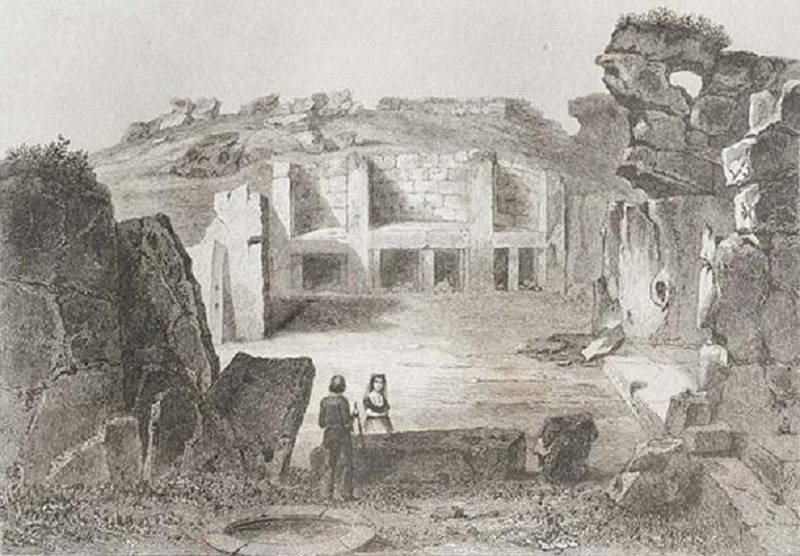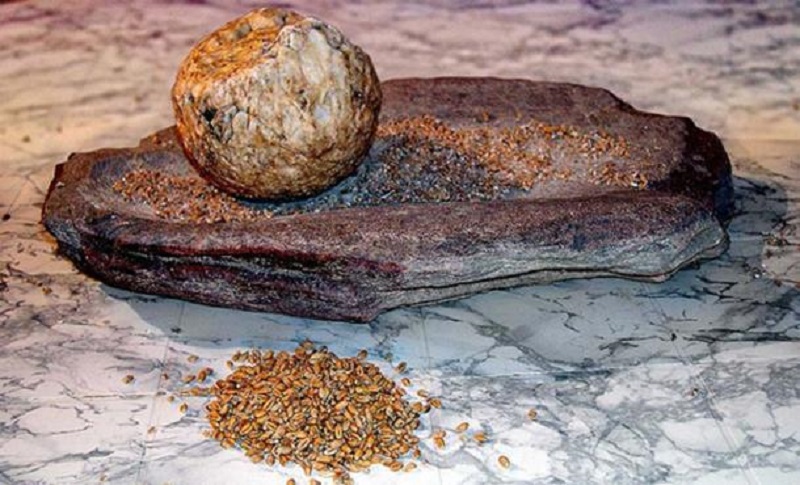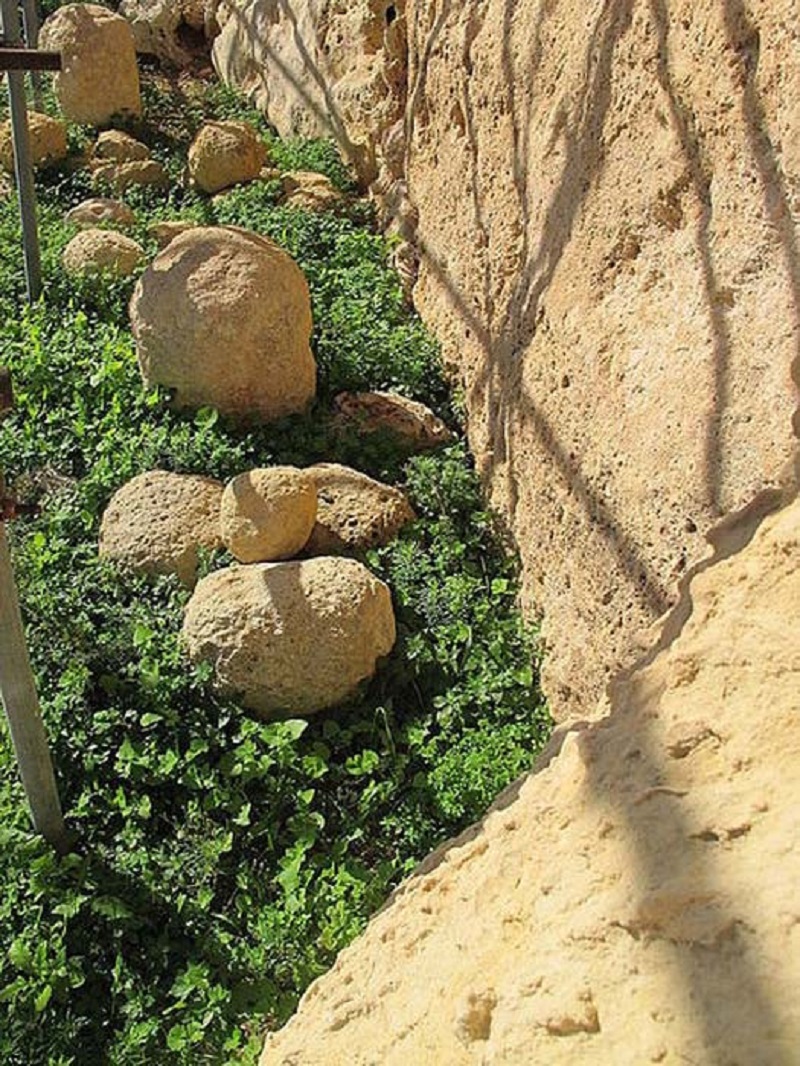The Ġgantija temples of the megalithic complex at Xaghra, Gozo, are one of the most important and mysterious archaeological sites in the world.
Gozo is one of Malta’s three islands; Malta, Gozo and Comino, lie just 90 km (55.92 mi) south of Sicily, in the middle of the Mediterranean. The two main islands of Malta and Gozo are served by hourly ferry services. Comino is the smallest of the three and is primarily a tourist destination famous for its Blue Grotto.
Ġgantija is located on a plateau, on the outskirts of the town of Xaghra. Many tourists flock to the town to enjoy the weekly market and beautiful church, completely unaware of the magnificent historical site located just nearby.
Investigate the Ġgantija temples
Scientific investigations carried out relatively recently have proven that these temples have existed here for more than 6000 years. The remaining evidence shows that the temples originally had plastered and painted roofs. The exact purpose for which they were built remains a mystery – although there is little doubt that they were places of worship.
Ġgantija consists of two separate temples: the South Temple (3600 BC) and the North Temple (3000 BC). The temples were excavated in 1826, although scientific excavation only began around the late 1920s.
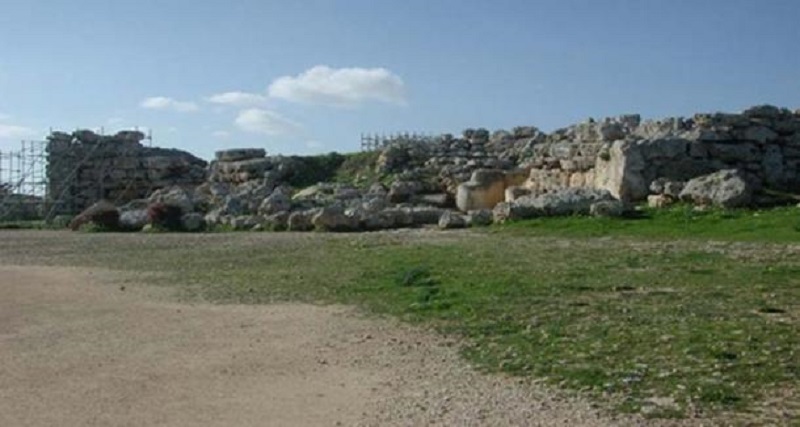
View of the Ġgantija temple complex.
The enormous size of the megaliths aroused the imagination of all who saw them. It has been suggested that giant structures were built during the Neolithic period, (c. 3600-2500 BC). This would make them over 6000 years old, one of the world’s oldest freestanding structures and of course some of the world’s oldest religious structures, dating back to era before the Egyptian Pyramids. (The Old Kingdom is often considered to span the period of Egyptian rule by the Third Dynasty through the Sixth Dynasty (2575 BC–2134 BC).)
This timeline also places the Ġgantija temples at the same time as Stonehenge. Stonehenge is a Neolithic and Bronze Age monument located near Amesbury in Wiltshire, England, about 8 miles (13 km) northwest of Salisbury. I have visited Stonehenge many times since I was stationed nearby during my service with the British Air Force in the early 50s. It consists of earthworks surrounding a circular frame of boulders large stands, also known as megaliths. There is some debate about the age of the stone circle, but most archaeologists believe it was mainly built between 2500 BC and 2000 BC. The older earthen banks and circular ditches form the earliest phase of the monument dating to about 3100 BC.
To this day, locals still believe that the temples on the Islands, especially those at Ġgantija, are the work of giants! Its name, Ġgantija, means “belonging to giants” in Maltese, attesting to this ancient legend.
‘Gozo (Tower of the Giants)’. ( Public Domain ) 1848 view of the megalithic temple of Ġgantija in Gozo, Malta, from the series ‘L’Univers pittoresque.’
Sign of worshiping the Goddess Mother Earth
It is believed that these temples may have been the site of the Fertility Cult of the Mother Earth Goddess. Many figurines were found on site that are believed to be related to that cult.
The mother goddess is a goddess, often depicted as Mother Earth, who serves as a general fertility deity, the earthly abundance personification. Thus, not all goddesses are considered incarnations of the mother goddess. She follows Western traditions from the elegant snake-offering goddess figures of Knossos to the stone-cut images of Cybele, to Dione (“Goddess”), who was invoked at Dodona with Zeus for to the end of the Classic period.
Early image of the “Mother Goddess” at Tarxien Temple (Malta).
Life in the Neolithic Age
Neolithic peoples were farmers and manufacturers of the tools needed to harvest crops and produce food. They were skilled manufacturers of many types of stone tools and ornaments. The Neolithic peoples of Central Asia were also skillful builders, using mud bricks to build houses and villages. In Europe, houses made of glue and earth were built.
Unique tombs are an important part of their culture. These tombs are especially numerous in Malta, where hundreds still exist. Neolithic people in Britain built long tombs and chambers for their deceased loved ones.
They were skilled at finding ways to preserve food for later months and used substances such as salt as preservatives. With a few exceptions, Neolithic Americans and their Pacific cousins retained similar technological levels until they came into contact with Europe.
Early Neolithic farming was limited to a few crops and the raising of sheep and goats. Around 7000 BC, cows and pigs were added, and the establishment of permanent or semi-permanent settlements and the use of pottery are also indicated.
Examples of Neolithic whetstones or grindstones for grain processing. (José-Manuel Benito/ CC BY SA 2.5 )
The earliest agricultural societies in the Near East did not use pottery, and in Britain it is unclear to what extent plants were domesticated during the earliest Neolithic period, or even whether sedentary societies whether it exists in the long term or not. In other parts of the world, such as Malta, North Africa, India and Southeast Asia, Neolithic cultures appear to have arisen completely independently of developing cultures elsewhere. Europe and Southwest Asia.
Not all elements of their culture – such as permanent villages, farming, animal husbandry and pottery – appeared in the same order.
Architecture of the megalithic complex
The temples are shaped like clover leaves, built of stone and filled with rubble. Most are built in the form of semicircular domes. They are connected to a central hall. Archaeological research has deduced that the domes were originally covered by brick arcades.
It is worth noting that at that time, no metal tools were available to the natives of the island of Malta and the wheel had not yet been introduced. Small round stones of various sizes have been found at the megalithic complex and many believe they were used as rollers to transport the huge blocks of stone used to build the temples, however However, this is where I differ greatly from my colleagues.
Stone balls found at Ġgantija. (Kritzolina/ CC BY SA 4.0 )
The Ġgantija megalithic complex is surrounded by a massive common boundary wall, one of the most striking features of the entire complex. It was built using the alternating head and stretcher technique, with some of the massive megaliths measuring over 5 meters (16.40 ft.) in length and weighing over 50 tons.

Two views of the massive walls at the Ġgantija megalithic complex.
The south temple is much older and more spacious than its sister site. It is believed that this structure dates back to around 3600 BC. This temple, like many other megalithic sites in Malta, faces southeast. At the entrance there is a large stone block with a niche. Archaeologists have speculated that this was used as a purification station before entering the complex.
Each temple has five roofs connected by a central corridor leading to the innermost trefoil-shaped section. The harem contains several altars and evidence of animal bones, which suggests the site was used for animal sacrifice. Images carved in stone of goats, sheep and pigs of both sexes give us a hint as to which animals were used in the sacrificial rituals.
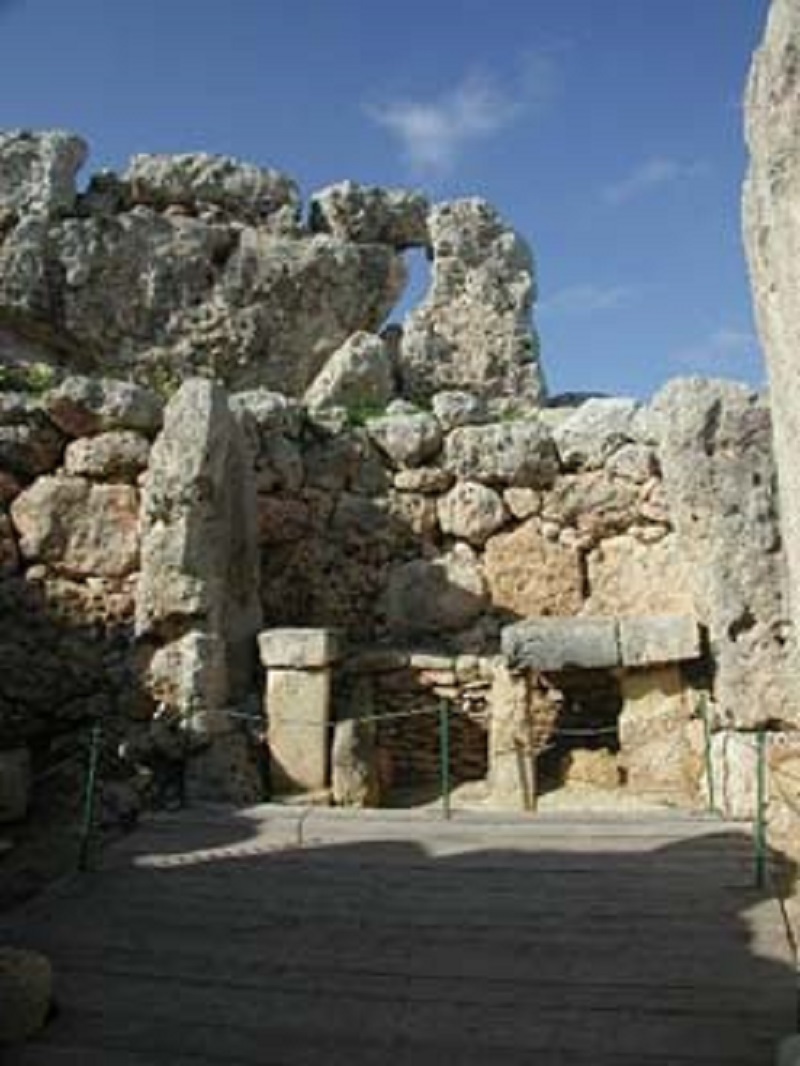
Several altars have been found.
The temples were built of rough, coral-lined limestone blocks. The ancient temple is larger and has various features such as altars, relief carvings and wine pits. The second temple was built much later and does not have such features. Another fascinating element is the corbelling technique used on the inward-slanting walls, evidence that the temple was once roofed.
According to this traveler’s experience, Malta is one of the most fascinating countries in the world, along with Egypt and China, it is a ‘must see’ destination on anyone’s bucket list! While the day-long cruise stops so you can admire the amazing architecture, home to so many cultures throughout the world’s history, exploring the sites and buildings is a must. into a wonderful experience worth a longer visit.
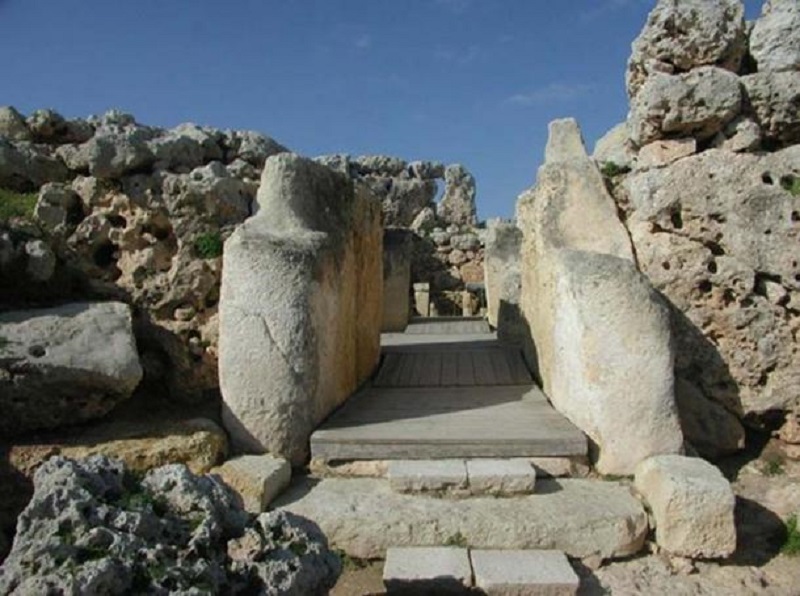
Entrance to the North Temple at the Ġgantija megalithic complex, Gozo.
